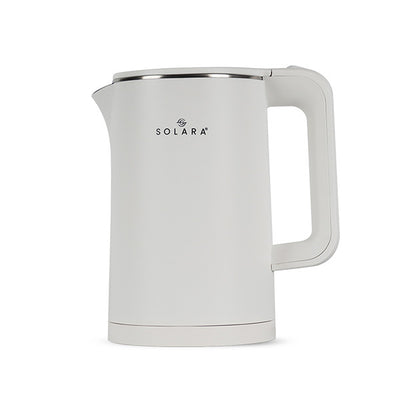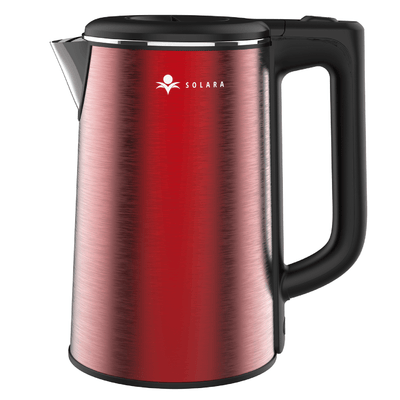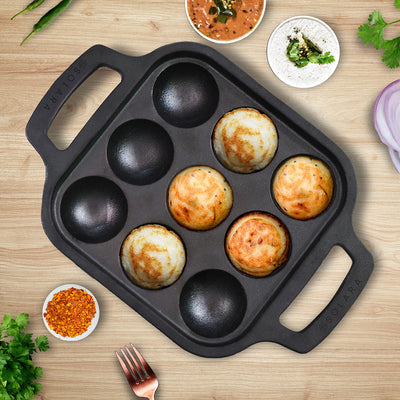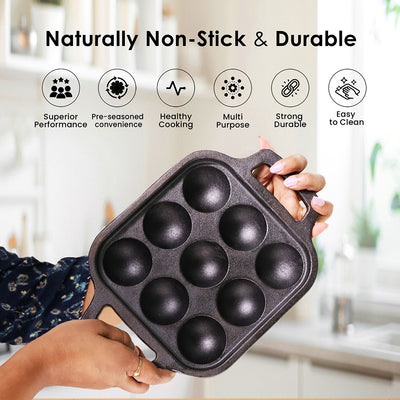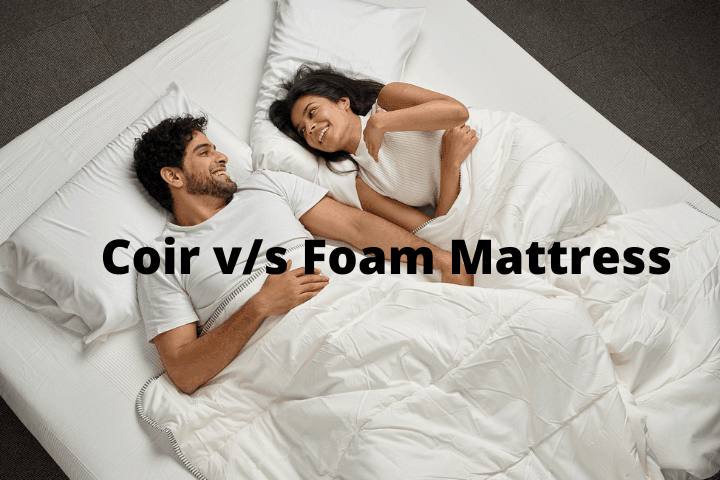
Don’t you feel the urge to drop down and lay back straight on your bed as soon as you complete your work? Or, while at home when you finish your chores, don’t you run to your sweet bed for a short afternoon power nap? Who doesn’t? Resting the body and mind after a bulk of work, or at a day’s end with the final nightly sleep-haul is as important to you as food, water, or oxygen is to your survival. Underestimating the impact that sleep has on your health can be risky. You could be holding the door open for endless diseases and even letting them affect you.
When we discuss sleep, do we need to talk about mattresses too?
In a survey done by the National Sleep Foundation, people said that a comfortable mattress helped them sleep well. There exist hundreds of other studies which say that if body ache is an everyday bother for you, the bedding you use can make a huge difference in your sleep health. A 2011 study by the Research Triangle International, under Drs. Andy Krystal and Jack Edinger, was one of the most elaborate studies ever conducted on how mattresses can impact your sleep. It spanned four years and took into account 128 subjects (mostly people who didn’t face body aches during sleep) and the 16,000 nights they spent sleeping. Two vital points that this study revealed,
1) Different mattresses work for different people. A soft or medium-firm mattress can relieve back pain for some, whereas a firm mattress can do wonders for others.
2) Moreover, the mattress that comforts us when we are wide awake may not support our body the same way when we are asleep. What? Really? Yes, and we need a little explanation here to make it clear for you. But first, do you know what REM sleep is? Your brain moves through five different stages during sleep. REM is one of them, wherein the brain is most active, and your eyes appear to move quickly in multiple directions, but they don’t convey any visual message to the brain. Hence, this stage is called REM (or, Rapid eye movement) sleep.
Now, you do most of the dreaming in REM sleep. Even your body undergoes a temporary state of paralysis, as the brain cautions the spinal cord to lock the arms and legs in place. You experience a state called atonia. This is helpful as it stops you from moving around freely and acting out your dreams, and thereby, preventing injuries. So the possibilities that a mattress may feel different or somewhat discomforting when you are in sleep are definitely present. The fact that your muscles have loosened out, the weight that your body exerts on its pressure points is more. It would not be a surprise if you don’t find your mattress up to the mark, as you did while testing it initially for purchase.
What is a coir mattress?
As the name suggests, it is a mattress primarily made up of coir (or, coconut fiber) extracted from the outer coat of the coconut shell. It is an age-old Indian invention which, with the boost of technology, has been evolving over the years to enhance its suitability for all. People use coir mattresses throughout India and in many parts of Asia too. The reason is, the raw material is available in plentiful quantities.
Fibrous husks collected from the coconut’s exterior undergo processing. Then, they are stacked uniformly. The various layers are held together with a latex solution, as lack of proper layering can make them vulnerable to impressions. Now, sleeping on coir alone is not possible. Therefore, some dense foam (mostly, polyurethane foam) is used to cover the coir. Even a layer of cotton is added as a final texture to make it more comfortable.
Types of coir mattresses
1) Hybrid coir mattress
The term “hybrid’ should tell you that this mattress is a mix of two materials; the primary material remains coir. In addition, the mattress comes with adjustable layers of foam well compressed in between and above the coir. It provides good ventilation, giving you cool bedding to rest.
2) Rubberized coir mattress
This mattress has a natural springy feel to it. Made up of coir and latex, it gives you the light bounce you need. Such a mattress is modelled with definite planning. It can help with orthopaedic support, relieving back and neck pain.
Pros of a coir mattress:
1) No more worrying about skin allergies!
If you are someone who is highly sensitive to chemicals or suffers from skin allergies quite frequently, you need a mattress devoid of chemicals entirely. A coir mattress has all things natural and eco-friendly in it - no involvement of toxic substances at any stage, be it the extraction of fibres or the latter manufacturing of mattresses using solutions of latex (which is nothing but natural rubber). Even some skin experts recommend using a coir mattress as it poses no threat to one’s skin health.
2) Provides good ventilation
Several regions of India have summer for about eight months of the year. A coir mattress can help deal with the typically hot and humid conditions. It absorbs your body sweat and even moisture from the surroundings, keeping you cool and dry. The network of coir inside the mattress provides clear pathways for the air and moisture to travel through and out. So, if you are a sweaty sleeper, a coil mattress can get you a good night’s sleep.
3) It says no to dust or dirt!
Dust allergies can sometimes turn critical. A coir mattress is anti-dust and prevents you from such infections. In case, you find any dirt settling on its surface or between the layers, simply sweep them away by drubbing the mattress a little.
4) Relieves back pain
The high-density coir used in the mattress offers firm support to your back. It maintains the neutral position of your spine. Unlike a spring mattress, it doesn’t allow motion transfer. Even if you sit and work or watch your favourite series all night long, your partner will never get to know a thing. Moreover, it can help improve your sleep postures.
5) It’s fire-resistant & drives out bacteria
Many people have a habit of keeping blowers or heaters near their beds. What if your mattress catches fire someday? A coir mattress is fire resistant and eliminates any chance of accidents.
It is also naturally antibacterial and assures no growth of microorganisms. This saves you from rashes and other skin diseases.
Cons of a coir mattress:
1) Not so durable
A coir mattress lasts for about five years, much less when compared to other mattresses.
2) A pinch on the pocket!
It is a bit costly! And because it doesn’t last for long, people tend to hesitate to spend money on it.
3) It sags quickly!
When you rest on a mattress, your body exerts its weight on it. Quite obvious, right? The problem with a coir mattress is that it can’t sustain the pressure for long and usually sags over some time.
Also, if you place it on a rough surface, it attains an improper structure. This can disrupt your sleep routines.
4) Bed bugs and critters may annoy you
According to anecdotes shared by people, it may attract bed bugs and other critters. The mattress becomes one big dump of their excreta, and this rings bad news for all. Skin diseases, coughing, congestion, and other similar conditions may occur.
5) Not everyone wants a firm mattress
Some users claimed that a coir mattress gave too firm a support. And it wasn’t desired at all. A few suggested that a coir mattress wouldn't be so problematic if used for short-time resting activities. You can have it in your backyard and relax in the sun, reading a book. But for a night-sleep schedule that stretches for about 6-9 hours, it is not so suitable.
What is a foam mattress?
Several purchase trends have observed that many who shop for mattresses online settle for a foam mattress. It is remarkably popular among the masses. Maybe, because it has too many varieties to choose from. Soft, firm, or balanced-firm - you can buy what appeals to your personal comfort! Even the prices for a foam mattress follow a broad range.
In most foam mattresses, you will find that varied materials such as polyfoam, memory foam, latex, etc., are used to make their different layers. Now, a foam mattress generally has 2-5 layers, each having a distinct foam material and density. Moreover, each layer serves an individual purpose. When it comes to mattresses that go well with a tight budget, you will get single-layer polyfoam beds. And sometimes, they may have an additional layer or two. But as mentioned earlier, a modern foam mattress usually takes the best of 2-5 foam types for its layers and offers a medium-firm and comfortable bedding.
Types of foam mattresses
1) Polyurethane foam mattress
Referred to as Polyfoam or PU foam, it is a common material used in foam mattresses. A little bouncier than memory foam, PU foam is lightweight and has a quick response to pressure. It also forms the top layer of spring beds and is meant for boosting comfort. It is mainly of three types,
- Regular-grade PU foam :It is the standard (and comparatively, softer) foam that makes up the transition layers, particularly in foam mattresses.
- High-density PU foam :Quite firm in nature, it acts as a vital ingredient in the making of the support layers.
- High-resiliency PU foam :It lends the best support and is fundamentally firmer out of all PU foams. But it is expensive, and hence, less frequently used.
2) Memory foam mattress
It is quite the darling mattress for most online mattress buyers. You would be surprised to know that it was first invented in the mid-1960s by NASA. Yes! They developed this miracle of mattress technology to nullify the huge pressure that astronauts faced as they entered and moved out of the earth’s atmosphere. This magic foam has then been taken up by hospitals, where it is used in wheelchairs or beds to help immobile patients.
Memory foam is very similar to PU foam, only a bit thicker and denser. It has also got a unique characteristic which fascinates all. For example, if you place your hand on a memory foam mattress and remove it after a while, you will find an exact outline of your hand indented on the mattress’ surface. Give it a few seconds, it will bounce back to being flat and impression-free. But this tendency of the memory foam material to remember the shape of your hand is the reason why we call it “memory” foam. In the long run, it does the same with your body shape and adjusts according to your needs. You will come across three of its subtypes
- Standard memory foam : It is the traditional foam material that manufacturers have been utilising for decades now. It is soft and still provides much-needed support to the body. Most importantly, it is affordable.
- Open-cell memory foam : Almost the same as a traditional memory foam! But it has a well-designed internal structure. It is composed of internal pockets, also called open cells, which create passages for the air to flow throughout the mattress.Some nights are warm and humid. An open-cell memory foam mattress can help you sleep cool and dry.
- Gel memory foam : It has an open-cell design, with tiny gel beads implanted in the memory foam material. This improves the air-flow cycle and enhances the cooling effect of the mattress. You can call it an advanced version of the open-cell memory foam model.
3) Latex foam mattress
Latex can be both natural and synthetic. But the latex foam used in mattresses is all clean and environmentally friendly. This includes how we obtain raw materials and the production process thereafter. However, it is more expensive than the standard PU foam bed.
Natural latex is derived from the milky (sap-like) substance produced by the Hevea brasiliensis rubber tree. It is then aerated thoroughly to consolidate the formation of air bubbles, which helps prepare a firm yet bouncy latex mattress later. When you apply pressure onto a latex mattress, it pushes back. This indicates how superiorly firm it is. Latex is also highly durable, and so a thin layer of it is used in other foam mattresses too. It is mostly of two types,
- Dunlop latex foam : It is made using an easy, traditional process and has a firmer feel.
- Talalay latex foam : The process that makes Talalay latex demands a lot of energy. This type of latex has a softer feel, yet it bounces a bit.
Pros of a foam mattress
1) It remembers your body shape!
Memory foam retaining body impressions for a few seconds - we talked about this before, right? But how does it help you while sleeping? Let’s understand. The memory foam mattress contours to your body shape, sinking in the parts it should. This way, it provides optimal alignment to the spine. And it feels as if it does the required calculations on its end, and then, targets perfect support to your body. It also eliminates back or neck aches and soothes sore joints.
2) Relieves the pressure points
“Different mattresses suit different body types!” And here we are repeating this statement yet again. So be careful when you pick one for yourself. Look what works for your body weight.
Memory foam and latex mattresses relieve the pressure points. They distribute the body weight uniformly and work to reduce pressure on the body parts which are heaviest of all. In doing so, they encourage healthy circulation of blood throughout the body and an interrupted sleep all night.
3) No movement travels across the bed!
Foam mattresses exhibit movement absorbency, especially memory foam and latex. In simple words, it cancels (or, diminishes) any transfer of movement across the bed. Even if you are quite the “athletic” sleeper, and you toss and turn while sleeping, your partner on the other end will never know your secret; (unless you tell them otherwise!)
4) Dust-resistant & durable
A memory foam mattress has a viscoelastic structure. It means any deformations that occur in the mattress (due to body weight) last only temporarily. As a result, dust mites and bed bugs can’t penetrate its thick and dense layers of foam. So, you get a clean and healthy bed to sleep upon. This can also put a check upon your allergies if you have any.
Foam mattresses are long-lasting. If properly maintained, they can work well for 7-9 years.
5) No matter what your sleeping position is - it helps all!
A memory foam mattress has solutions for all kinds of sleepers.
- Back sleeper : It ensures neutral positioning of the spine and offers lumbar support
- Front sleeper : When you are a front sleeper, it is important to have a mattress that supports your back’s natural curvature. A memory foam mattress does it for you and decreases pressure on the lower back.
- Side sleeper : It distributes the body weight and shifts the pressure away from your hips and shoulders. And all this while helping the waist to align smoothly and stress-free. A customer survey suggests that side sleepers usually go for mattresses that conform to their body shape and weight.
[Note: If you often find yourself lying on your stomach when you wake up, opt for firmer foam beds to get sufficient support.]
Buy Mattresses online from Solara :
Cons of a foam mattress
1) There is a bad smell, initially!Most foam mattresses “off-gas” for the first 1-3 days, i.e., when you set them up, they release an unpleasant odor.
It is advised to leave them in fresh air for 1-2 days when they first arrive. Most companies claim that the “off-gassing” is because of the fire retardant that gets sprayed on them.
2) Traps body heatSome foam materials trap heat, and it is most evident in case of the memory foams. It can be extremely bothersome if you are sensitive to body temperature issues or you sweat during sleep. Besides, if you live in a hot region, things can get pretty messy.
These days, however, you will find memory foam mattresses equipped with cool-gel technology helping to regulate temperature at night.
3) Not firm enough for someSome foam models are too soft to provide adequate support. If you sleep on such a mattress, chances are that it will sink and get you uncomfortable.
4) Budget constraints can be an issue!The luxury foam beds come with high price tags, especially latex mattresses. If you desire premium foam and heavenly comfort, you need to get a little extravagant in matters of money.
5) The “bouncy feel” is unconvincing!Some say that the bounce is too less, while others imply that it’s too much.
Now, the question that we finally get at - what should you buy? Coir or foam mattress? Don’t stress, as most online mattress retailers offer free trial periods (sometimes, for up to a month or more). This policy provides some kind of guarantee during the buying process. You can replace your mattress if you don’t feel satisfied with it, within the stipulated period. Some companies may also refund your money. So pay attention to all signs and symptoms of your mattress and listen to what your body and mind feel about it.











